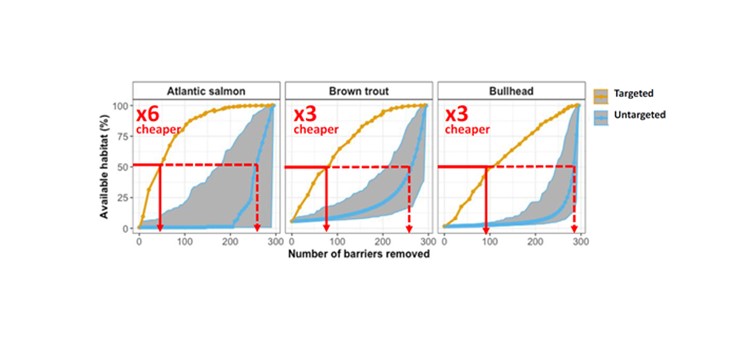
Graph comparing targeted and untargeted river barrier removal for 3 species of fish: Atlantic salmon, brown trout and bullhead, based on available habitat and the number of barriers removed.
Removing river barriers in the Afan using a targeted approach is 3-6 times cheaper than removing barriers at random.
Millie Parks, an MSc by Research student supervised by Prof Carlos Garcia De Leaniz and Dr Josh Jones based at Swansea University, Centre for Sustainable Aquatic Research, has been using a mathematical optimization approach to prioritize barriers for removal in the River Afan, based on removal costs and connectivity gains for species with different swimming abilities.
The original algorithm optimises connectivity gains based on river length, but Millie has modified it to use both the extent and quality of the habitat and applied it to brown trout, bullhead and Atlantic salmon. The Afan is an ideal good test ground to try this approach as it is the only catchment in Wales (and possibly in the UK) where there is a complete inventory of all barriers to fish movements, both natural and artificial. Simulations show that a targeted approach to barrier mitigation yields benefits from the first barrier and is about 3-6 times more effective (cheaper) than removing barriers at random.
Results also show that the budget plays a significant role in prioritizing barriers for removal. At low budgets, it is better to prioritise barrier removal based on river quality and area, but with higher budgets, the differences are not so important, and managers can use river length. When the budget is very limited (as is often the case in river restoration), it is essential to use as much information on habitat quality as possible as this determines how much quality habitat can be made accessible with each removal.
